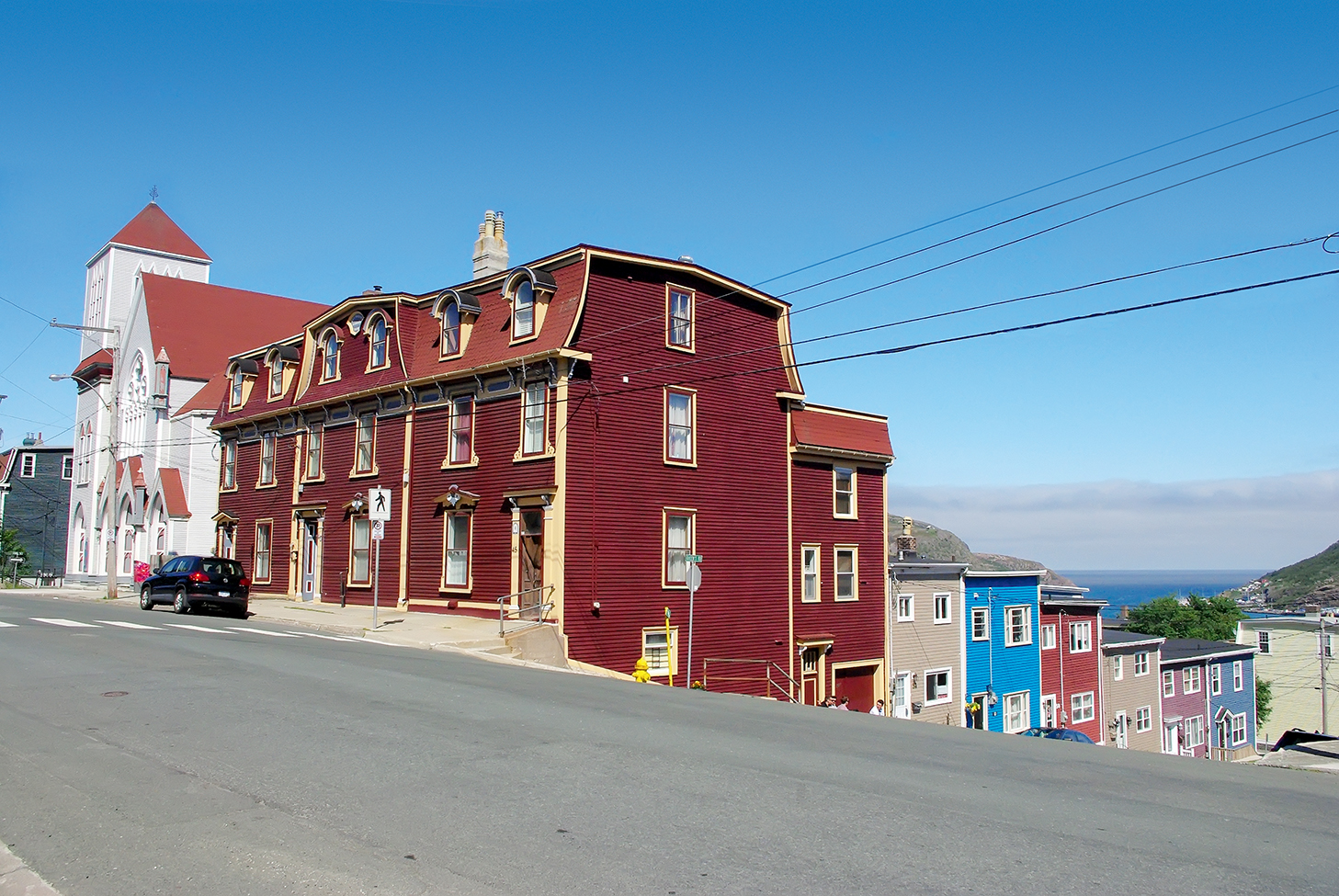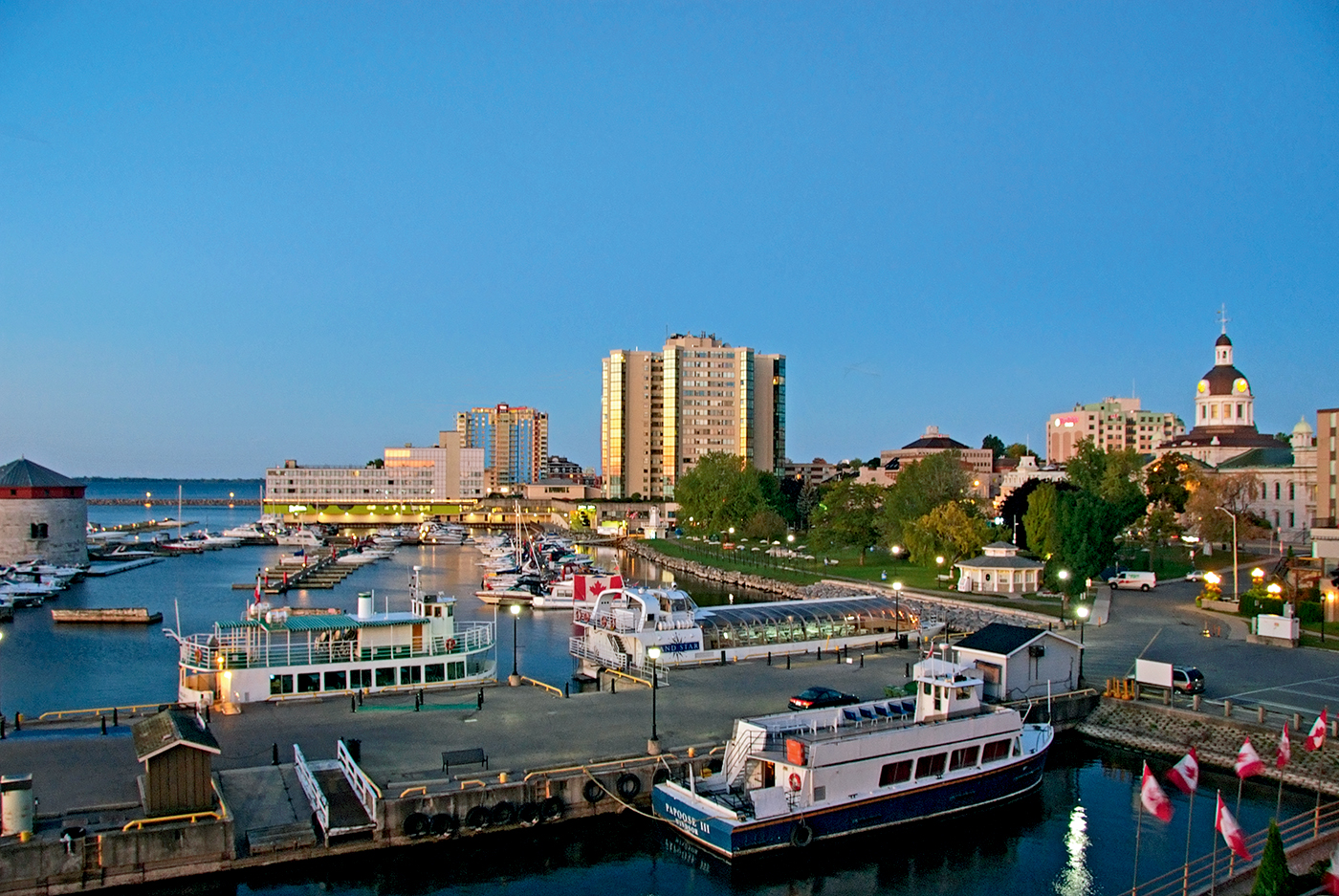By Wendy Haaf
Victoria Street. Photo: Alain Verronneau

Photo: Destination St. John’s.
At one time, Pamela and William Baker imagined they’d leave their hometown of St. John’s, NL, after retiring and travel, living like the locals, first in England and then in downtown Toronto. In the end, though, neither place could tempt the couple enough to uproot them from their two daughters and their lively, almost impossibly picturesque city on Canada’s easternmost shore.
With its mix of unique culture, history, and arts, with its laid-back pace, and set against some of the most stunning scenery in the world, St. John’s, with a population of just over 200,000, combines some of the best qualities of both a European village and a big city, with a charm all its own.
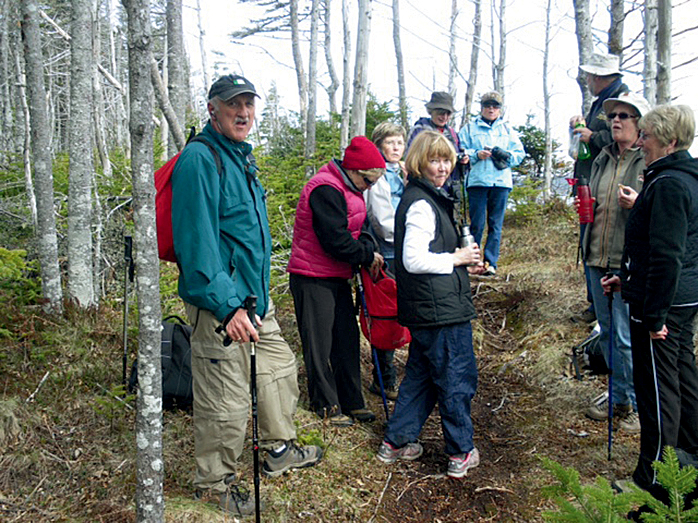
Probus Club hiking.
“There’s a closeness that you find on an island that you probably don’t find in larger centres,” says retiree Wayne Green, president of the Probus Club of St. John’s Region, who was born and bred in the provincial capital. (A Rotary Club spinoff, the Probus Club movement is found worldwide and brings together retired and semi-retired professionals and business people, hosting a monthly speaker, as well as offering book clubs and groups centred around activities such as bridge.)
In addition to being hospitable, St. John’s is also affordable: for example, in 2016, the average home price there was $313,000. As the province’s hub for health care, the city has a well-regarded medical school, plus hospitals and clinics offering comprehensive health care. St. John’s is also home to Atlantic Canada’s largest university—Memorial University of Newfoundland— as well as several community and recreation centres, libraries, colleges, a craft centre featuring a clay studio, and a wealth of programs for retirees, ranging from lifelong learning classes to fitness groups and clubs such as Probus. An international airport also makes travel relatively convenient, with year-round daily flights to a handful of Canadian cities and to Heathrow Airport in London, England, as well as seasonal service to Dublin, Gatwick Airport (England), and destinations in Florida, Cuba, Jamaica, and the Dominican Republic.
St. John’s has established a reputation as a culinary destination, featuring excellent restaurants and even tours that teach you how to forage for local delicacies such as sugar kelp and sea rockets. The city also has a varied, vital cultural scene, with live theatre and dance—and kitchen parties. “In downtown St. John’s, you can go out to hear live music almost every night of the week,” Pamela Baker says. George Street is considered one of North America’s premier entertainment districts, where you can find virtually every kind of live music.

Photo: Newfoundland and Labrador Tourism.
At least every other week beginning in spring and stretching to late fall, the calendar is filled with festivals and celebrations highlighting everything from opera and folk music to writing and rowing—the Royal St. John’s Regatta is the longest-running sporting event in North America, celebrating its 200th anniversary in August 2018 (though it’s believed to be even older).
Having been inhabited for more than 500 years, the city abounds with historic sites, such as Commissariat House, the residence of the supply officer for Britain’s forces in Newfoundland during the 19th century, where today you can experience how Christmas was celebrated in the Georgian era.
“We have some very good art galleries and internationally known local artists,” Pamela Baker says. Numbering among the former is The Rooms, a cultural centre, museum (with collections including more than a million natural history specimens), art gallery, and café under one roof.
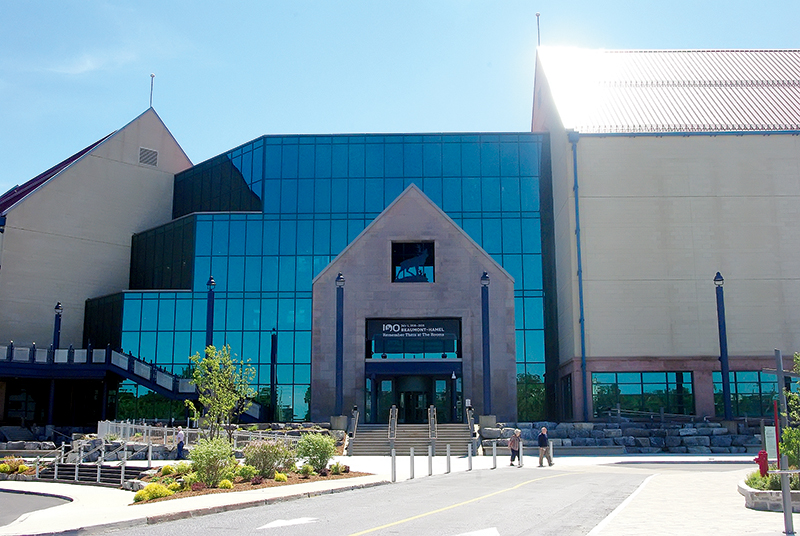
The Rooms. Photo: Alain Verronneau.
Whether you’re a walker, cyclist, golfer, or camper, there are a number of places within the city to indulge in your preferred pursuit. You can use your mobile phone to map a route that matches your interests (such as heritage sites, scenery, and fitness) and your ability level on the 125-kilometre (78-mile) “Grand Concourse” network of trails, or stroll along one of the pathways in Memorial University’s Botanical Gardens before grabbing a bite at the onsite café.
“There’s a golf course a five-minute walk from where I live, so I play every day,” says Green, who also tours the province every summer with a few friends, playing at courses along the way. “We’ve stayed at many B & B’s where you’re sitting down to breakfast with people from every province, the States, and Europe,” he says. “It’s almost as if you don’t have to leave your province to be exposed to culture elsewhere.”

Spectators in front of Mile One Centre. Photo: Destination St. John’s.
You can camp surrounded by woods or, once the snow begins to fall, snowshoe and cross-country ski on the groomed trails in Pippy Park, just a five-minute drive from a major shopping centre. “Corner Brook, a short flight away, has the best downhill skiing east of Montreal and great snowshoeing trails,” says Pamela Baker, who adds that enjoying winter sports is almost a must if you live in St. John’s.
But perhaps the city’s greatest treasure is its rugged, unspoiled landscapes and seascapes, including sections of the East Coast Trail, which offers some of the most spectacular wilderness hiking anywhere.
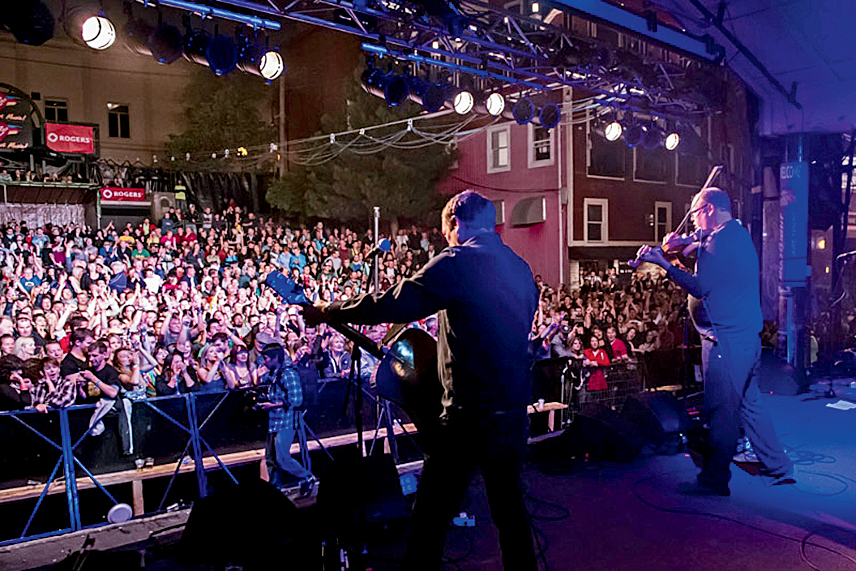
George Street Festival. Photo: Destination St. John’s.
“In the spring,” Pamela Baker says, “you can sit at Cape Spear, the easternmost point in Canada, and watch the whales and the icebergs.”
St. John’s, Green says, “is a great place to do what I enjoy doing. It has everything I want.”


